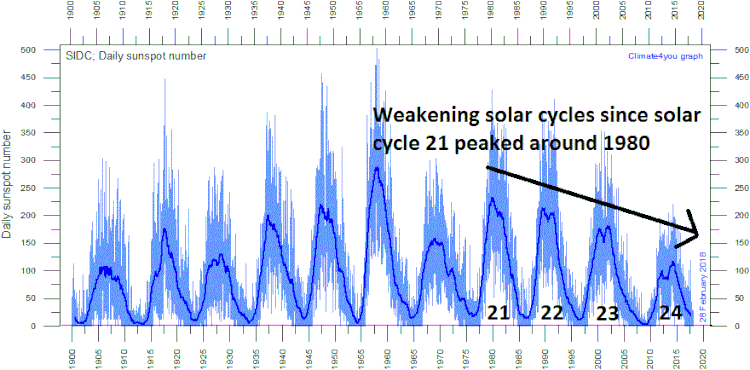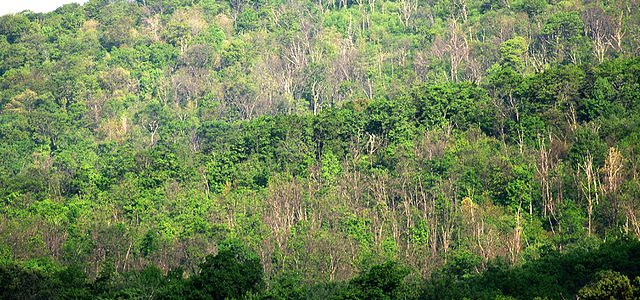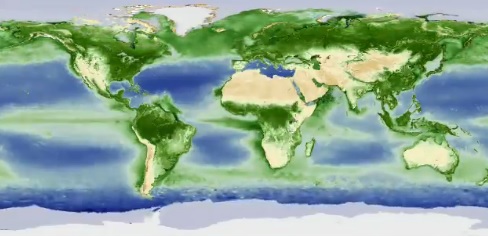Climate and Ag in the news
-

Rain and frost have hurt the supply of artichokes from California this year according to The Packer last week. First a heavy frost hit, and that was followed by rain which caused the artichokes to look frosted and reduced yields just ahead of the Easter season, when artichokes are often promoted. However, unless they get…
-

This is one of the more unusual stories I have read about the relationship between agriculture and climate. A set of new rivers has appeared in Argentina, due to a combination of factors that includes land use changes associated with growing soybeans and a rainier climate. The rivers are rapidly eroding farmland, leaving behind deepening…
-

Here’s an excellent discussion of recent solar activity and the grand solar minimum which will be occurring shortly from my friend John Feldt of Blue Water Outlook, who has given me permission to share it. Solar activity has been rapidly decreasing since around 1980. The current cycle, Solar Cycle 24, has been marked by the…
-

Molly Samuel had a story this week on WABE 90.1 radio describing a new study that shows that “Over the past few decades, forests in the eastern U.S. have changed in response to changes in the climate. A recent study describes how as climate alters forests, those same forests then have an effect on the climate. The Southeast…
-

The Global Weather and Climate Center posted a video this week from NASA showing a loop of the movement of the green vegetation bands across the globe with the seasons. You can really see the shift of the plants on the land and in the ocean as the sun moves north and then south again.…
-

Most weather forecasts are pretty good at up to a week out, and even general trends to 10 days or more can be helpful for planning purposes. Climate forecasts for general patterns several months out can also be good, especially when there is a strong El Niño or La Niña event occurring. But in the…
-

Unlike older physical sciences like physics and chemistry, atmospheric sciences developed most of its theories in the 20th century, especially after the start of the aviation industry, when a three-dimensional picture of the atmosphere was needed to navigate safely. One of the puzzles in early weather forecasting was why it took longer to fly from…